There’s nothing quite like the blooms of a Strelitzia. Shaped like vibrantly-colored birds in flight, the flowers on a bird of paradise plant are uniquely gorgeous, transforming your patio or landscape into a tropical utopia.
But all good things must come to an end, and there will be a time in every Strelitzia flower’s life when it starts to fade and then die. As it becomes all brown and crusty-looking, a spent bloom makes the switch from “hot stuff” to “hot mess.”
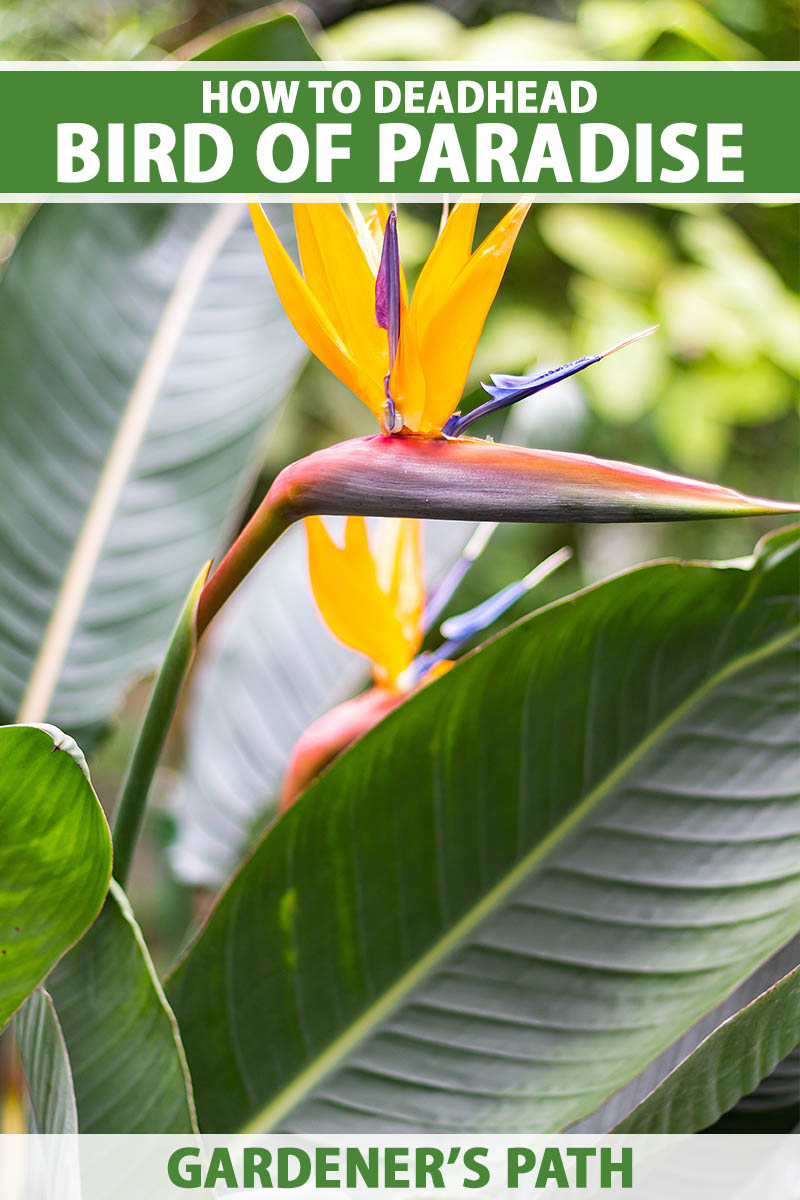
We link to vendors to help you find relevant products. If you buy from one of our links, we may earn a commission.
Thankfully, this needn’t be a long-term issue. By deadheading Strelitzia flowers, you can save your birds of paradise from sporting sorry-looking blossoms, while stimulating additional botanical benefits.
In this guide to removing spent bird of paradise flowers, we’ll walk you through the Strelitzia deadheading process. Don’t worry – your birds of paradise will be shipshape in no time!
Here’s everything we’ll cover:
What You’ll Learn
Why Deadhead Birds of Paradise?
Right about now, you might be thinking, “Ugh, more yardwork? Why even bother?”
I feel ya. But trust me, you’ll want to deadhead once you know the benefits.
Improve Aesthetics
This was briefly touched on above, but it bears repeating: a dead bloom is an ugly bloom.
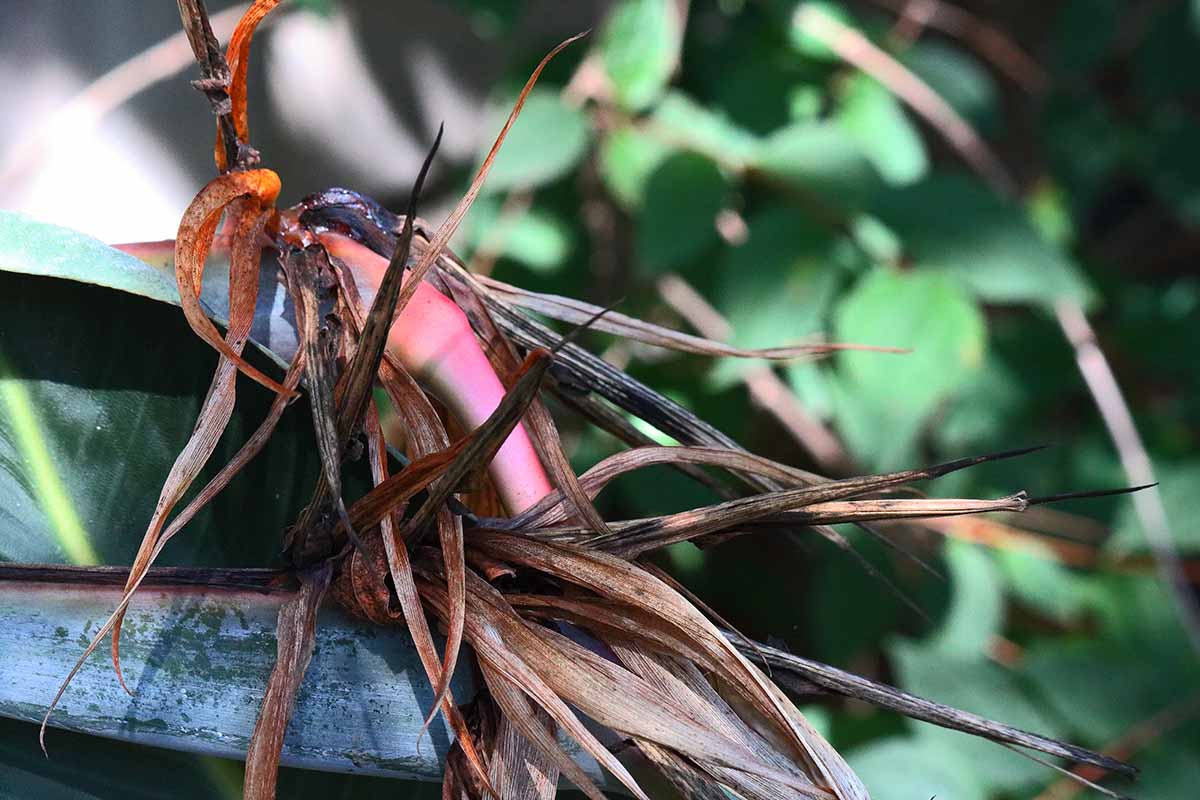
Floral senescence shifts a Strelitzia flower’s resemblance to a tropical bird majestically soaring through the air to something more akin to compost. Not a good look.
By removing these eyesores, you can keep your bird of paradise looking fresh.
Reduce Disease Pressure
Spent blooms are prime entry points for pests and pathogens.
Without the defense mechanisms that come with healthy, vivacious growth that’s happily doing its thing, senescing Strelitzia flowers are at greater risk of infestation and infection, opening up the whole plant to potential issues.
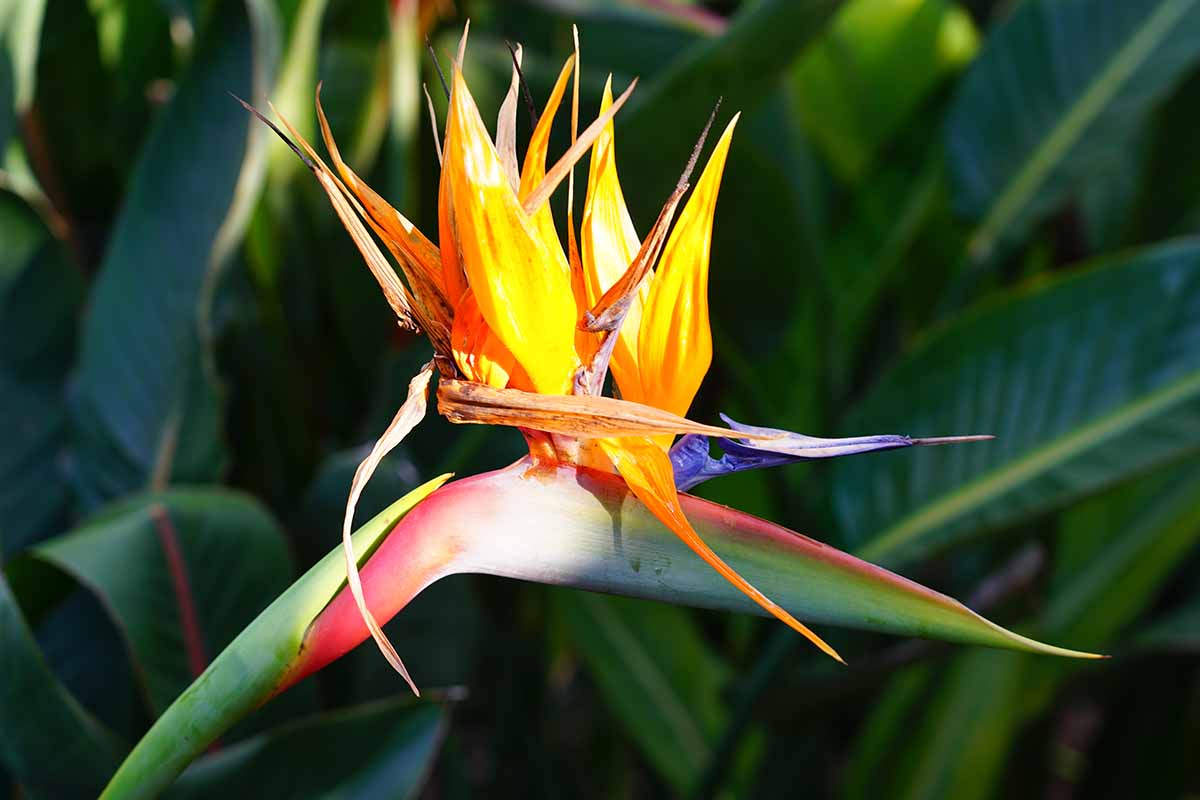
So by deadheading, you’ll eliminate a bird of paradise’s vulnerable spots and keep it healthier in the long run.
Stimulate Reblooming and Growth
As a living organism, a plant’s chief goal is to survive and reproduce. After floral senescence, the next step in the life cycle is seed production.
When you remove spent Strelitzia blooms, this forces the plant to have another go at flowering in an attempt to produce future seeds.
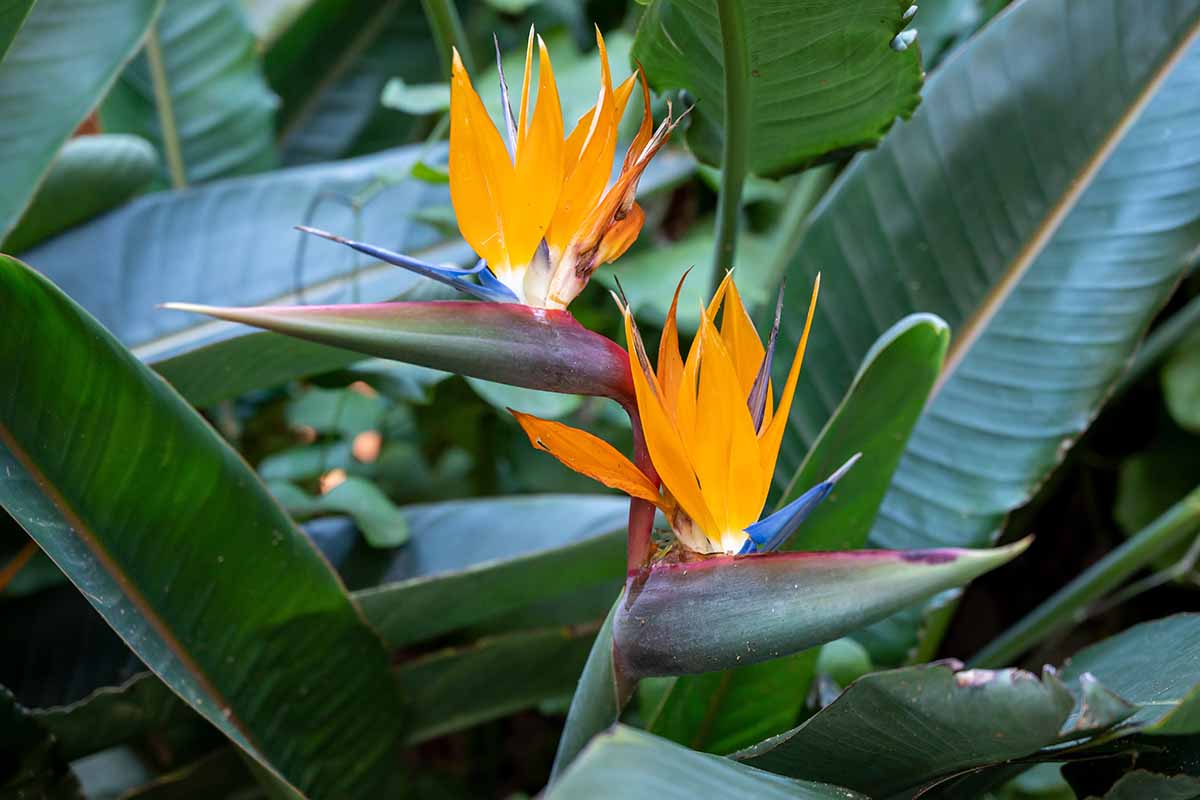
So the deadheading process, while removing a flower in the short term, also potentially adds one or more in the long term. Since lush, new blooms will replace the old and ugly ones, this is a pretty significant upgrade.
And that’s not all – despite appearing completely dead, spent blooms still demand energy from the plant that could otherwise contribute to new growth, while performing the reproductive function of producing seeds instead.
By doing away with these metabolically-mooching structures, resources can go towards those new flowers, along with additional roots and shoots.
What You’ll Need
In order to remove a bird of paradise’s spent blooms, you’ll require an assortment of sharp and sterile objects.
Since this is a deadheading guide for the entire Strelitzia genus, the tools you use will be determined more specifically by the size and species of the plants that you’re working with.
Hand Pruners
Hand pruners will come in “hand-y” for the skinnier-stemmed S. reginae and S. juncea species. Bypass pruners in particular are the best option to make clean cuts while prolonging blade sharpness.
Need a set of ultra-sharp and rubber-gripped bypass pruners that come in either rose gold or sky blue? Then head on over to Garrett Wade.
Want to add a black leather sheath as an accessory for storing your new pruners? You’ll find these at Garrett Wade as well.
Pruning Saw
A pruning saw will work nicely on immature S. nicolai, S. alba, and S. caudata plants, when they’re not fully grown and still accessible from ground level.
These will eventually reach a substantial height, but thankfully, these plants can be deadheaded in the earlier stages of development without vertical assistance.
A pruning saw with a 12-inch blade and a protective sheath for storage is available from the good folks over at Gardener’s Supply.
Pole Saw
Once the tree-like species grow too tall for you to reach with your pruning saw, it’s time to switch to the pole saw, a tool that extends your sawing range without resorting to climbing up on any unstable ladders or stools.
A pole saw is exactly what it sounds like: a saw on a pole. The pole is usually hollow, which makes it easier on your muscles during long bouts of effort.
Adjustable models are either collapsible or easily disassembled into separate pieces, enabling length customization and convenient storage.
A pole saw that disassembles into three six-foot handles for a total reach of 19 feet is available from Garrett Wade.
Isopropyl Alcohol
As you deadhead your birds of paradise, any pathogens present on the spent blooms can end up on your pruners or saw blades. If you don’t properly sterilize your tools, these disease-causing hitchhikers can end up infecting the next plant that you work on!
Luckily, isopropyl alcohol provides a cheap and effective means of sterilization.
To sterilize, simply prepare a solution of isopropyl alcohol and water – with at least 70 percent of it coming from the alcohol – and apply it to your tools.
Either dip them into the solution directly, or apply the solution as a spray from an old squirt bottle. Wipe down the tools with a clean rag, and they’re ready for action!

Visit Amazon to purchase 16-ounce bottles of 99 percent isopropyl alcohol from Solimo.
When to Deadhead Strelitzia
You don’t have to wait for a specific season when it comes to these plants – check them regularly when you make your rounds of the garden, and deadhead blooms as soon as they start to senesce or visually decline.
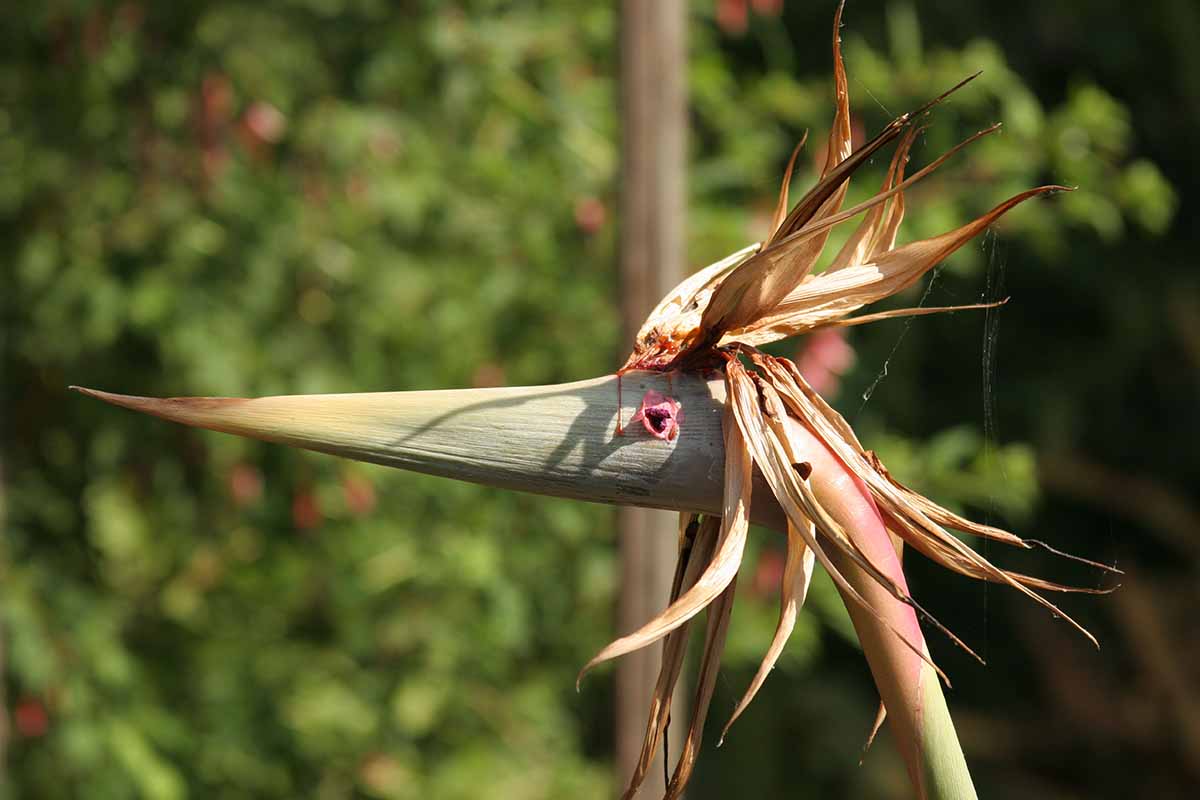
Since evaluating aesthetics is somewhat subjective, a good indicator to keep an eye out for is when the flower petals start to brown and become crispy.
Keep in mind that dead flowers will remain on a bird of paradise plant indefinitely, so it’s up to you to remove them.
How to Deadhead
Deadheading techniques can vary, depending on the species.
For S. reginae and S. juncea, the flowers are produced on separate stems, which sprout adjacent to the foliar stalks. To remove these blooms, sever their stems at the base with hand pruners.
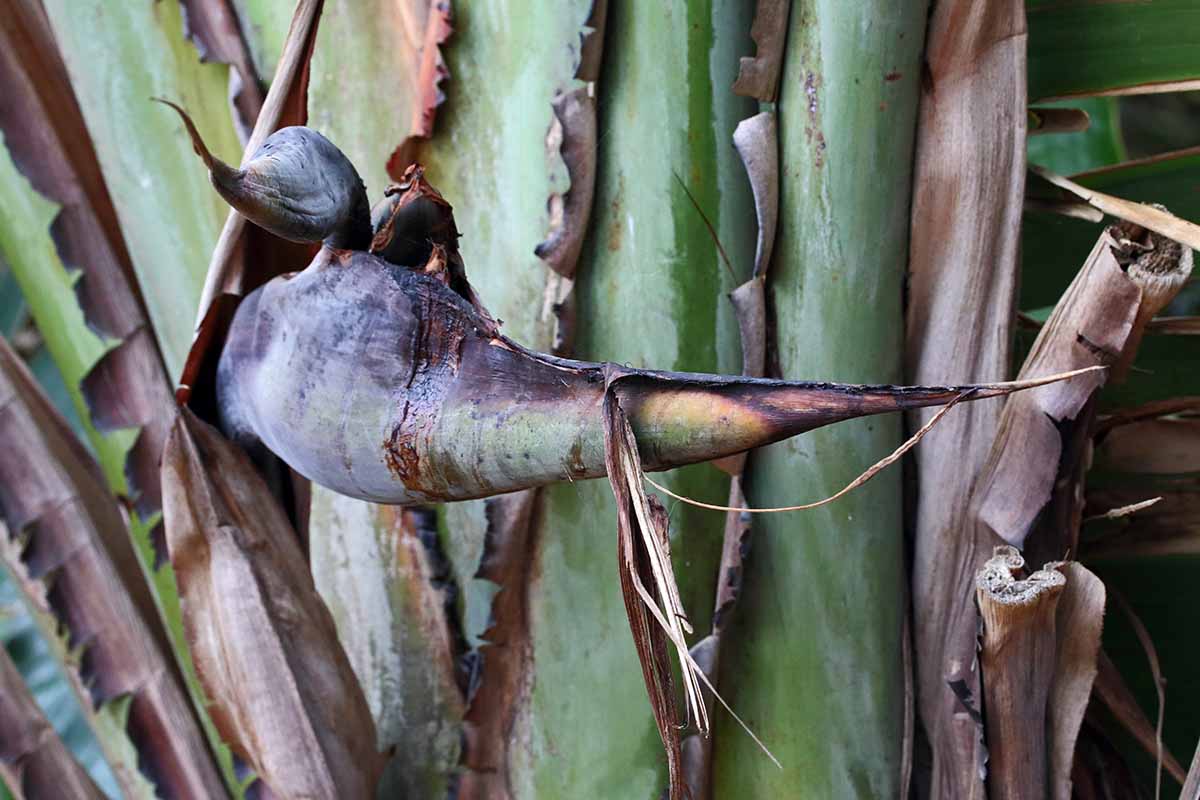
When it comes to S. nicolai, S. alba, and S. caudata, you’ll want to saw off the spent blooms at their neck, or where the flower part stops and the stem begins.
The flowers of these tree-like species tend to jut out above where the leaf stems meet the trunk, right where the foliage starts to fan out. They don’t have readily visible stems, so just try and “decapitate” the blooms.
Dispose of the deadheaded detritus once you’re finished. Mission accomplished!
Removing Spent Flowers Is Like a Gardening Superpower
Once a gardener learns how to deadhead blooms, they gain the fantastic ability to influence a plant’s growth and development in order to improve its beauty – enviable prowess with a plant as gorgeous as bird of paradise.
Congratulations on gaining this Strelitzia skill! It’s an essential part of keeping these plants in peak ornamental shape, not to mention satisfying. Go forth and deadhead with pride!
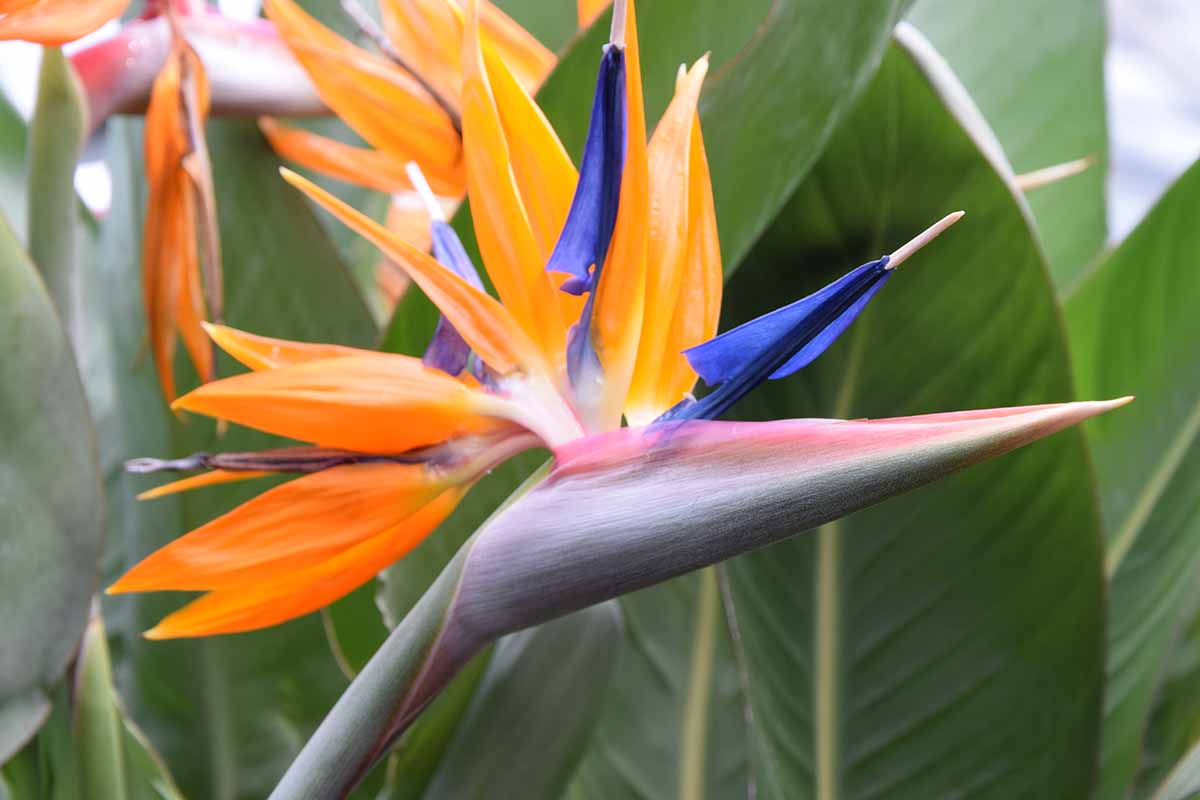
If you have questions, anecdotes, or just random things to say, put it in the comments section below. I love to read and respond, so don’t be bashful!
If you enjoyed learning how to deadhead your bird of paradise, expand your Strelitzia know-how with these other guides:
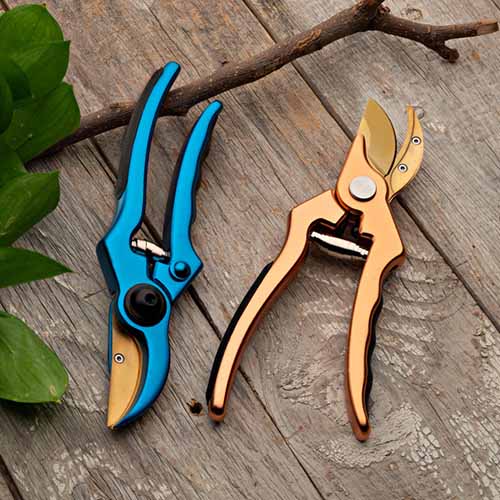
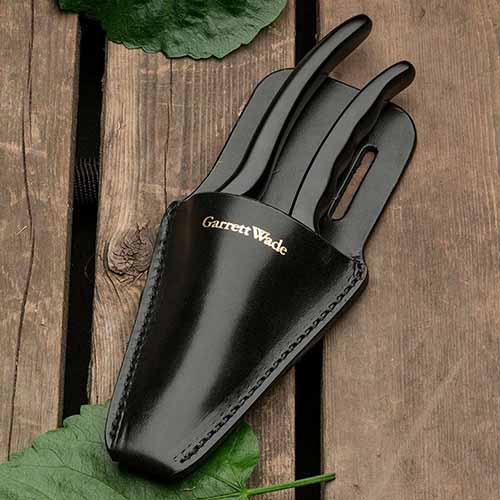
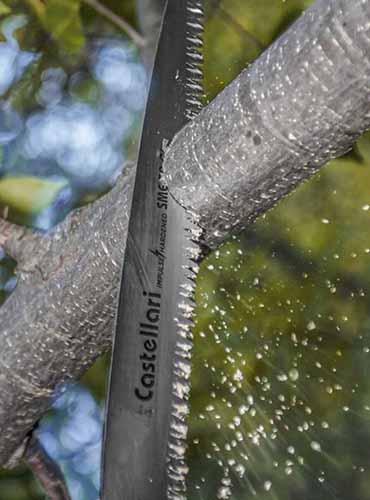
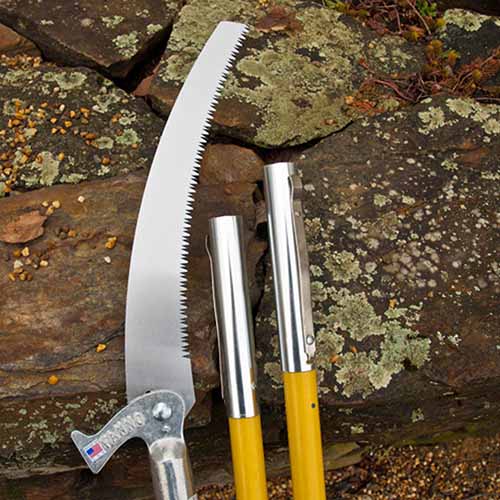
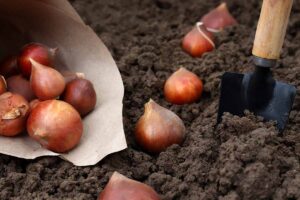
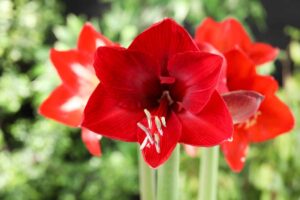
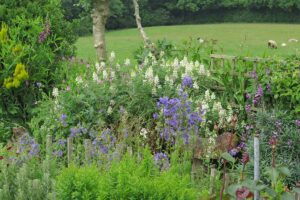
Nice article! Here is a pic of my Bird of Paradise. No one seems to be able to answer this question for me! I’ve already removed the dead flowers. Now, do I cut this at the top (#1) or at the bottom (#2) at the bottom of the flower stalk?
Hi Ray, your picture didn’t upload, could you try again? Thanks!
Great info, thanx! I had a 3 year old yellow BOP as a houseplant that was full and bloomed like crazy. Was so proud. Then I noticed the leaves turning a bluish shade, and then they started curling into tubes. I thought it might be getting potbound, so I went to put it in a nice new home. When I got the new pot ready, I gently removed the topsoil, and loosened the edges. It slid right out, I was amazed at the tubers, they were huge, and so many! I got it as a mail order bare root sprout.… Read more »
Hey, Ron! That’s an interesting issue… it’s possible that your leaves curled as a way of conserving moisture to compensate for not enough water… did you provide it with enough water to keep the soil relatively moist? Also, indoor birds of paradise can definitely use some supplemental humidity. Misting the air around the plant daily can go a long way, especially if it’s sitting in a dry room. As for why the tubers didn’t regrow… they might have been depleted from putting out the old shoots and flowers, and thus had less energy for growing new ones. I’m thinking that… Read more »
Thanks for your reply!
I water once a week faithfully, and mist not daily, but regularly..I am a senior citizen..lol Your right, it is dry here. But the other BOP are still doing fine..go figure..Just hope it doesn’t happen again! Thanks for your time and knowledge.
Your site is so beneficial !!
Thank You again, Ron
You’re very welcome, Ron! Glad you like the site!
What causes the flowers to fall off ?
Hey, Colleen! Many stressors can cause flowers to fall: too much/not enough water, excess nitrogen, temperature extremes, low fertility, pests and diseases, etc. Even if nothing is wrong, flowers will eventually fall because they reach the end of their life cycle.